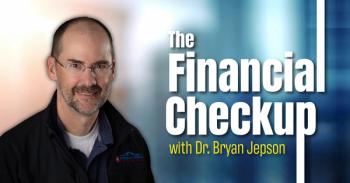
5 risk mitigation strategies for physician practice owners
How to safeguard the benefits of private practice amid unique, high-stakes challenges.
Equity in a private practice amplifies opportunity and risk. While physician ownership offers rewards — higher earning potential, professional autonomy, long-term
Below are five essential strategies for mitigating risk and maximizing the benefits of private ownership. These strategies will ensure long-term stability and prosperity for you and your practice.
What are the specific risks & challenges of physician ownership?
Unlike employed physicians who focus primarily on patient care, private practice owners must also run a business, and the stakes are high. Any failure to properly manage finances or liabilities can jeopardize professional and personal wealth.
To protect the practice, physician-owners must address many risk factors, such as:
- Professional liability coverage
One of the most significant risks for physicians is professional liability. As a practice owner, you are responsible for ensuring that malpractice insurance covers you and your clinical staff adequately.
Choosing the right policy can be complex; you must vet insurance carriers properly, analyze policy terms, and balance coverage limits with premium costs. Inadequate coverage exposes your personal and business assets to medical malpractice litigation, which can be financially devastating without proper coverage.
- Cybersecurity and HIPAA compliance
As a practice owner, you are liable for ensuring compliance with Health Insurance Portability and Accountability Act (HIPAA) regulations, staff training, audit preparation, and patient electronic health records protection.
- Overdependence on the founding physician
If you, as the founding physician, cannot take an extended vacation without significant disruptions, your business is too dependent on you. A lack of operational autonomy threatens the long-term viability of your business. It deteriorates practice value because the business's success relies too heavily on your involvement and oversight.
- Personal wealth vulnerability
Many physician-owners make the mistake of retaining or reinvesting 80% to 90% of their net worth inside their practice as equity in the value of their business. This leaves their overall net worth dangerously exposed if anything were to go wrong with the practice. As an investment model, this “all eggs in one basket” strategy exacerbates risk by violating the best practice of financial diversification.
- Professional incompatibility
Physician-owners can often spend 30%, 40% or more of their professional time on administrative or operational tasks, which is not ideal for every physician. After the initial excitement of opening a practice, some discover that the day-to-day running of a business misaligns with their strengths and interests and how they’d prefer to spend their time (i.e., the tradeoff between working “in” the business and working “on” the business).
How can physicians mitigate risk and protect the viability of their practice?
Implementing these risk management techniques can help physician-owners realize all the benefits and financial rewards of owning a medical practice.
Highlight ownership in patient marketing
Emphasizing your physician-owner status can be a powerful differentiator in attracting and retaining patients who prefer a long-term health care partner. Patients often associate ownership with greater commitment, continuity, and accountability.
Together, these dynamics can bolster the practice’s reputation and revenue.
Long-term relationships: As an owner, you’re less likely to leave for another employer, signaling stability and long-term relationship potential — something many patients value.
Marketing advantage: Reassure patients of your long-term commitment by clearly stating your ownership status, demonstrating your dedication to reliable care, and ensuring the practice’s ongoing success and stability.
Establish a tax-advantaged real estate income stream
If you plan to invest in commercial real estate for your practice, consider purchasing the building through a separate entity as a personal investment and renting out the space to your business as a tenant. Consequently, you maximize income through three revenue streams: rental income as a landlord, profit distributions as a business owner, and your salary as a practitioner.
This arrangement diversifies personal cash flow and offers additional advantages:
- Tax benefits: The IRS encourages real estate investors to stimulate local economies by offering tax incentives, such as depreciation deductions, that can significantly reduce taxable income when properly managed.
- Retirement income: If you choose to sell your practice, you can retain the building and continue receiving rental income, increasing your cash flow and enhancing your retirement financial security.
- Asset protection: Separating real estate ownership from practice can provide additional legal and liability safeguards.
Diversify your wealth to avoid overleveraging business equity
Building a successful medical practice naturally requires a substantial investment of your time and money. Still, it is critical to balance reinvesting profits to grow the practice and channeling profits towards personal investments that diversify your assets (real estate, retirement accounts, or a portfolio of stocks and bonds).
Physicians can diversify financial risk with these strategies:
- Target 50% (or less) in practice equity: Diversifying personal assets is among the most powerful ways to hedge against financial setbacks. Over time, aim to have no more than half of your total net worth tied up in your practice. This approach cushions you against business-specific risks and preserves personal financial stability.
- Retirement planning: Do not rely exclusively on the future sale of your practice to support your retirement lifestyle. Among other risk factors, unpredictable market forces can significantly affect the practice’s valuation. Instead, diversify your portfolio to build a more reliable nest egg to support your retirement goals.
Balance business investments with valuation goals
Scaling a medical practice does not simply equate to adding clinical and non-clinical staff. The actual “holy grail” of practice development establishes precise and efficient processes that allow the business to thrive independently without overdependence on the owner.
To maximize valuation, focus on strategic investments that bolster productivity and operational resilience:
- Steady growth: Avoid sudden headcount expansions that outpace your administrative capacity. Focus on hiring high-quality talent that increases redundancy for critical roles and safeguards against workforce disruptions.
- Ongoing maintenance: Regularly keep up with necessary upgrades and system improvements, not procrastinating until it comes time to sell. Buyers prefer practices that can run smoothly from day one.
- Tail insurance: Pre-secured and robust
malpractice tail coverage can make your practice more marketable, demonstrating high-value and substantial due diligence to prospective buyers.
Bridge knowledge gaps with consultants and advisers
Although physician owners must handle various roles, expecting them to be experts in all aspects of business ownership is unfair and unrealistic. Engaging specialized consultants, such as human resources advisers and information technology experts, helps prevent costly errors and frees up more time for patient care.
Outside experts can help you scan for risk factors and develop action plans for areas that are outside of your core medical training:
- Financial Planning: Engage an adviser who understands personal and small business financials. A fee-only financial adviser can offer trusted guidance on insurance, investment portfolios, and retirement, helping you balance immediate income needs against long-term wealth preservation.
Like a chief financial officer for your personal life, financial advisers provide guidance on:
- Business equity vs. personal asset ratios
Retirement savings projections - Diversified investment strategies
- Spending budgets that support retirement goals
- Life & Disability Insurance needs assessments
- Real estate deal structures
- Human Resources: Use HR consultants to establish robust hiring practices, understand insurance needs, improve staffing redundancies, and verify compliance with state and federal labor regulations.
‘Healthy paranoia’
As Andy Grove, the former CEO of Intel, advises in his book, “Only the Paranoid Survive: How to Exploit the Crisis Points That Challenge Every Company,” cultivating a healthy sense of “paranoia” helps you anticipate potential threats and proactively manage risk.
With the proper professional support, diversified finances, and proactive operational investments, physician-owners are better positioned to embrace the upsides of business equity without falling victim to the risky downsides.
Craig Toberman, CFA, CPA, CFP, is partner at
Newsletter
Stay informed and empowered with Medical Economics enewsletter, delivering expert insights, financial strategies, practice management tips and technology trends — tailored for today’s physicians.







